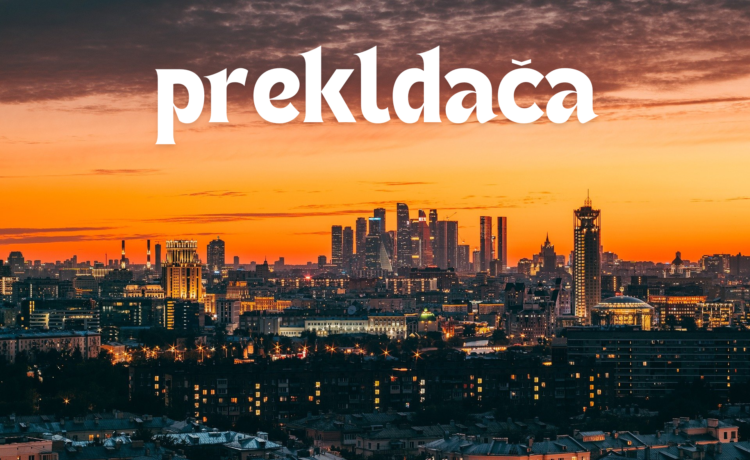In the rapidly evolving world of technology and communication, the need for accurate and effective translation services has never been greater. Among the various tools available to facilitate this process, the term prekldača (translated from Slovene as “translator”) holds significant importance. This article delves into the concept of prekldača, its various forms, and its critical role in bridging linguistic and cultural divides.
What is Prekldača?
Prekldača refers to a translator or translation tool that helps convert text from one language to another. The term is often used in the context of both human translators and machine translation systems. With globalization and increased interconnectedness, the demand for effective translation services has surged, making the role of prekldača essential in various fields, including business, healthcare, education, and literature.
Read more : Exploring the Future of Stock Market Fintechzoom Innovations
Types of Prekldača
- Human Translators: Human translators possess the unique ability to understand nuances, context, and cultural implications that machines may overlook. They are often specialized in specific fields, such as legal, medical, or technical translation. Human translators can provide a level of accuracy and understanding that machines often cannot replicate.
- Machine Translators: Machine translation (MT) refers to the use of software to translate text automatically. Popular tools include Google Translate, DeepL, and Microsoft Translator. These tools use algorithms and vast databases to provide translations in real-time. While machine translation has improved significantly over the years, it still struggles with idiomatic expressions, cultural context, and specialized terminology.
- Translation Software: Translation software often combines both human and machine translation features. It allows users to input text and receive both machine-generated translations and options for human proofreading. Tools like SDL Trados and MemoQ are widely used by professional translators to streamline their workflow and ensure accuracy.
Importance of Prekldača
The role of prekldača is crucial in today’s globalized world. Here are several key reasons why translation services are essential:
- Global Communication: In an era where businesses operate on a global scale, effective communication across languages is vital. Companies expanding into new markets rely on prekldača to localize their content, ensuring that their message resonates with diverse audiences.
- Cultural Understanding: Language is deeply intertwined with culture. Prekldača aids in cultural exchange by providing translations that honor cultural nuances. This fosters understanding and respect among different cultures, helping to bridge gaps and promote harmony.
- Legal and Medical Accuracy: In fields like law and healthcare, precision is paramount. Legal documents, medical records, and patient information must be accurately translated to avoid misunderstandings that could have serious consequences. Human prekldača are often employed in these contexts to ensure that every term is translated with utmost care.
- Education and Research: Prekldača plays a vital role in the academic world, enabling researchers and students to access materials in different languages. This access to information promotes collaboration and innovation across borders.
- Literature and Arts: Translators contribute to the preservation and dissemination of literature and art across cultures. Through their work, they bring stories, poems, and artistic expressions from one language to another, allowing for a broader appreciation of diverse literary traditions.
Challenges Faced by Prekldača
Despite its importance, the field of translation faces several challenges:
- Complexity of Language: Every language has its own set of rules, idioms, and cultural references. Translating these elements accurately requires a deep understanding of both the source and target languages, making the work of a prekldača complex and demanding.
- Machine Translation Limitations: While machine translation has advanced significantly, it still struggles with contextual understanding, idiomatic expressions, and complex sentence structures. This can lead to errors and misinterpretations, highlighting the necessity for human oversight.
- Cultural Sensitivity: Language is not merely about words; it is also about conveying emotions, attitudes, and cultural values. A successful prekldača must navigate these subtleties to ensure that the translation is culturally appropriate and sensitive.
- Technological Advancements: The rise of artificial intelligence (AI) and machine learning in translation technology poses a challenge for human translators. While these technologies enhance efficiency, they also create competition for traditional translation roles.
Future of Prekldača
The future of prekldača is poised for transformation as technology continues to evolve. Here are some trends to watch:
- Integration of AI: AI-driven translation tools are likely to become more sophisticated, enabling quicker and more accurate translations. However, human translators will still be crucial for nuanced and context-sensitive translations.
- Collaboration Tools: The emergence of collaborative translation platforms allows translators to work together in real-time, sharing insights and expertise. This trend is likely to enhance the quality and speed of translation projects.
- Increased Demand for Localization: As businesses expand globally, the demand for localization services—adapting content not just linguistically but also culturally—will grow. Prekldača will need to evolve to meet these needs effectively.
- Focus on Ethical Translation: Ethical considerations, such as the importance of representation and inclusivity in translation, will become increasingly significant. Translators will be called upon to ensure that their work reflects diverse perspectives and voices.
Conclusion
In summary, prekldača is a vital component of our interconnected world. Whether through human expertise or advanced technology, translation services play a crucial role in facilitating communication, understanding, and collaboration across cultures and languages. As the field continues to evolve, the importance of accurate and culturally sensitive translation will only increase, ensuring that the world remains connected despite its linguistic diversity.
References
- Baker, M. (2018). In Other Words: A Coursebook on Translation. Routledge.
- Pym, A. (2010). Exploring Translation Theories. Routledge.
- O’Brien, S. (2012). The Role of Technology in Translation. In The Handbook of Translation Studies.
This article highlights the multifaceted role of prekldača and emphasizes the significance of both human and machine translation in today’s global landscape.






